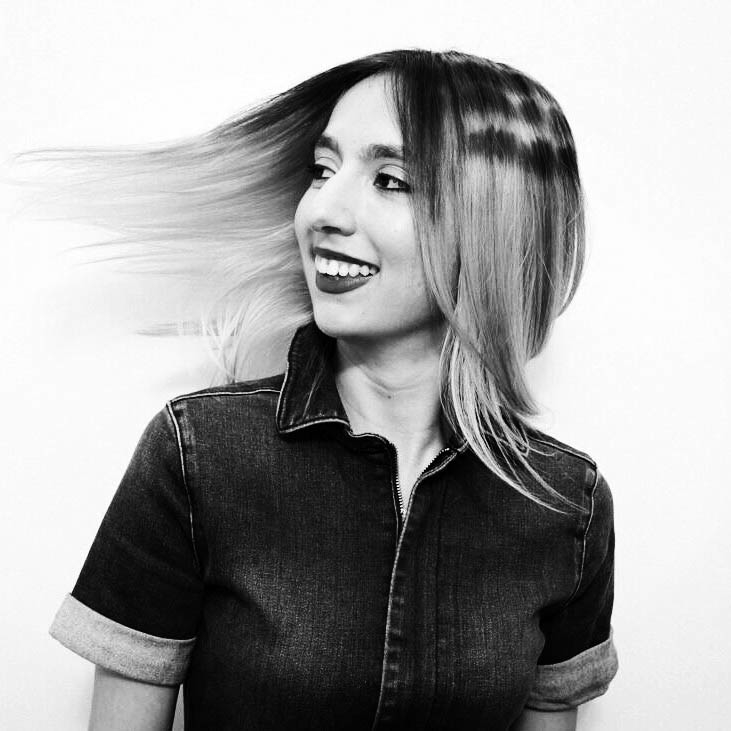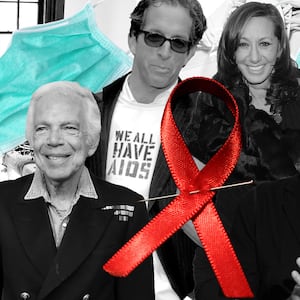The coronavirus pandemic may have cancelled concerts, Broadway shows, and countless weddings, but fashion magazine editors want to make one thing clear: This disaster will not kill the September issue. It might just look a little different this year.
The September issue is famous for its hefty weight—last year’s Vogue iteration clocked in at 596 pages, with 365 ads. Should we expect the same for 2020? It’s hard to imagine that staffers working from home can churn out the usual splashy editorials, or that brands will shell for ad space as they have in the past. As The New York Times asked, What's The Point of a Fashion Magazine Anymore?
Vogue’s June/July issue dropped online last week, featuring medical worker portraits by Ethan James Green and selfies taken by celebrities in isolation. Anna Wintour’s front-of-book letter preaches solidarity and is titled “In This Together.”
Will the team spirit last until fall, or will the so-called fashion bible turn to the future and depict a post-virus world? Online, Vogue has already published scores of stories about designer face masks; it remains to be seen if those will make an appearance on September issue models.
A Vogue editor was not made available for an interview regarding its September issue. Nicole Phelps is the director of Vogue Runway, which indexes looks from past seasons. She wrote in an email that, “first person storytelling is proving to be a very powerful medium for Vogue, both online and in print in our June/July issue. We will of course continue to highlight the many talented individuals and groups in our industry; as the situation evolves so will our content from tales of self-isolation to stories about re-emergence.”
A representative for the glossy added, “We have something special planned” for the September issue, offering no further details.
Magazines take months to produce and ship out, so part of an editor’s job has always been to predict the future. A global pandemic makes things even trickier. With the public’s needs changing seemingly by the hour, all bets are off for what the world will look like in September. If there is any incentive to keep printing coronavirus stories, it could be because of the success outlets are finding online.
According to Tracy David, chief marketing officer at social media analytics firm ListenFirst, “Social media posts by fashion magazines that were related to coronavirus generated 85.65% more content responses than posts by those magazines between March 16-April 26 that didn’t mention COVID-19.”
This holds especially true for Vogue. David found the glossy’s pandemic posts received 4.3 times more responses than those that did not touch on the topic. Harper’s Bazaar, Cosmopolitan, InStyle, W, and Elle also had greater engagement when referencing the virus.
Aya Kanai took over as Marie Claire’s editor-in-chief in January, and the coronavirus crisis proved to be her first big test of leadership. She’s planning her debut September issue ever now. “I come from a fashion-oriented background, and we’re currently meeting to discuss our lineup,” Kanai told The Daily Beast. “In terms of working with all of the brands that we would normally feature in the magazine, that looks really different now.”
Market editors must now double-check that the clothes they pull for the issue will indeed be available to shop this summer, no small task as supply chains shutter and creatives close their studios.
“It is a bit of a moving target,” Kanai said. “We are going brand-by-brand to make sure that the looks we feature are items that will be available to the consumer. There’s no use putting it in the magazine if people can’t get excited about it and go see it in stores.” (Or online, as the case may be.)
It won’t be all fashion, though. Kanai said her team is in the middle of planning different features for September, including one about the future of privacy. “You might not think that’s coronavirus-related, but it kind of is,” she said. “It will cover everything that we are learning now about the way in which our health information is shared.”
Another planned story involves profiling the women behind companies that help with working remotely. “We got so jazzed about it in our features meeting because we kept discovering women who worked in these leadership roles,” Kanai said. “The ability to work virtually for people like me has been priceless, so I want to learn about the people who are creating this process.”
Jenny Bailly, executive beauty director at Allure, wrote in an email: “In print, we are not doing stories on COVID directly but our content reflects the new realities of our audience’s needs and routines. Beauty is and always has been a mirror of the times, so the cultural upheaval of this pandemic will certainly impact the stories and visuals you see on all of Allure’s platforms for a very long time.”
Meanwhile, Shape editor-in-chief Elizabeth Goodman told The Daily Beast that her team is “staying away from specific corona or COVID-19 information, but focusing on creating smart, informative health and wellness content that is useful and relevant under any circumstances.”
They are currently working on a July/August issue that will have a new column on ways to boost the immune system. One feature planned for September covers “how to keep personal self-care and wellness-centric products clean using the latest hygienic best practices.”
Jessica Pels, editor-in-chief of Cosmopolitan, does not think September issues should resemble the glitzy editions of past years.
“I live inside the relentless pursuit of really nimbly responding to what’s happening in the world and what our audience needs as a result of it,” Pels told The Daily Beast. “How can we be thought leaders in times like these? It would seem tone deaf for us to produce a September issue that is all celebration and no reconciling what we’ve been through, what the next steps are, and what life looks like for young people.”
The September issue has always been about transition, after all, and seasons still change even if people stay inside. “I am seeing the September issue as a moment of hope,” Pels said. “It’s something that’s beloved historically because it marks a shift, a launch into fall. I hope in 2020 that it marks a shift into figuring out what our new normal is.”
But like everyone else, editors don’t really know what “normal” means. Pels said her staff has to be “really pragmatic” about what might be doable come fall. Last year, Pels interviewed Democratic candidates during primary season, and she hoped to set up some “really ambitious election campaigns and programs” for November.
Not so much anymore: “Now we’re having to step back and think about how we will be voting in person,” she said. “We hope that voting will be remote and digital, but we can’t be sure that’s going to be the case.”
Magazine editors are used to the hum of a newsroom, but also the perks of the gig: product launches, spa appointments, breakfast meetings. Now they have to navigate a famously social industry from the quiet of their own living rooms. It’s a good time to reflect on what the job means to them stripped of its gilded facade.
“In the craziness of commuting, meeting, trying to run from appointment to appointment, it’s easy to forget the core objective of your brand,” Kanai said. “What I have learned is to constantly be asking the question: What makes this a Marie Claire story that couldn’t appear anywhere else? It’s been really exciting for me to dive deeper into the original premise of the magazine.”
And yes, even in a pandemic, the heart of so many glossies still beats for fashion. “It will have a huge presence,” Pels said. “The thing that is not at all surprising to millennial women is that fashion helps to make you feel like yourself and feel better.”







